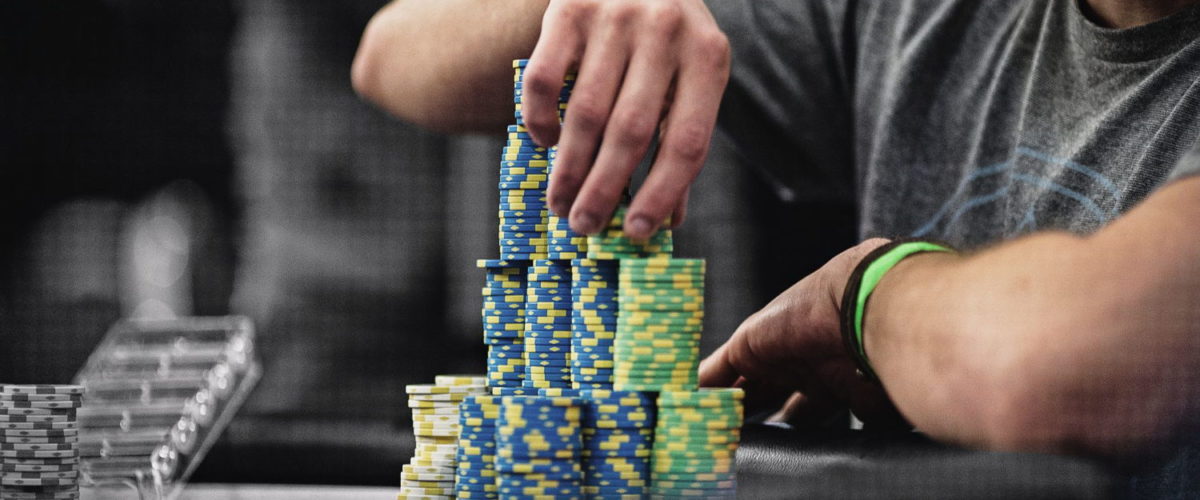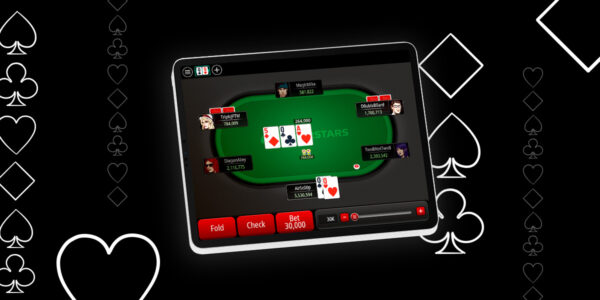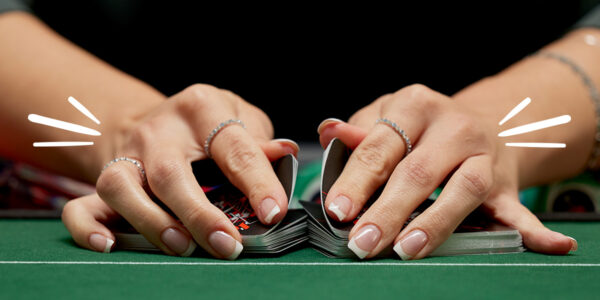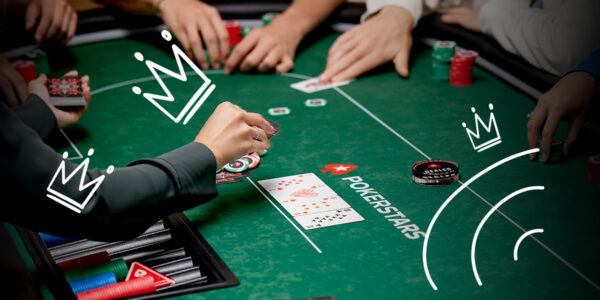The Game Theory of Board Texture: Part 6 – How to Build a Checking Range
On today’s flop of J♦️7♠️2♥️, all of the Button’s [JJ-AA] are still very nutted and this gives him the licence to bet big. Despite having a big nut advantage, this board is not so fantastic for the pre-flop raiser that he necessarily wants to bet all of his range. This episode explores a road map to building your checking range in a theoretically correct way.
Flop Strategy on J♦️7♠️2♥️
I removed the small bet option from my solver when I ran the simulation for this flop because the solver hardly ever chose it in an earlier trial where I used both sizes. We have only two options in this range chart: bet 75% pot (pink) and check (green). Here is the bird’s eye view of our strategy:

Check Portions
Let me introduce a bit of jargon. The check portions of our range are the segments which are too mediocre to want to bet for value and too strong to bluff with. Such hands will usually choose the check action at a high frequency, especially on flops such as this one where we only have the bigger bet to choose from.
There will always be two types of frequently checked hands on the flop:
The higher check portion
And:
The lower check portion.
The Higher Check Portion
The higher check portion encompasses hands which are quite strong and very often best. These hands are strong enough to get at least one or two streets of value by betting, but they do not need to bet to deny equity immediately because they are not very vulnerable to many overcards falling. In this case, TT is the centre of the higher check portion and almost always checks behind on this flop. Even though it could value bet, it usually elects not to. There is no need to begin building the pot right away.
Slightly stronger, but still checking a lot are weak top pairs like J5s, J6s, and J8s. These hands, like TT, are very often the best hand but do not gain much by building a massive pot and do not need to start betting quite yet. They do not want to blow out lots of the Big Blind’s weaker hands. They are well equipped to bluff catch later in the hand or maybe just go for two streets of value if Villain checks again on the turn. They are relatively stable hands, meaning that they do not get much weaker on too many run outs. A stronger hand like AJ on the other hand must bet now because it needs to bet three times to maximise its EV. AJ is well above the higher checking portion.
Contrast this to a slightly lower and more vulnerable pair like 88. This hand is a bit too vulnerable to always check and resides right on the border line between the higher check portion and the lower check portion. It is good enough to value bet for at least for one street and is incentivised to do so immediately in order to deny equity to our opponents’ bigger cards at least some of the time.
The Lower Check Portion
On J♦️7♠️2♥️ the lower checking portion comprises hands that are too weak to value-bet but have too much showdown value to bluff. These hands may be vulnerable and would hypothetically like to bet for protection if they weren’t too bad to get called by worse.
When your hand is usually beaten when called, protection betting becomes a lot less attractive.
Therefore, the lower checking portion checks because betting would isolate it against mostly stronger hands without folding out anything better.
The lower checking portion here is made up of weaker pocket pairs like 33 and 44, but also big Ace-Highs such as AK, AQ, and AT. These hands cannot value bet, nor can they bluff.
The main difference between the higher check portion and the lower one, then, is that the higher checking portion could value bet, but it chooses not to because it is not urgent that it denies any equity to Villain. Meanwhile, the lower checking portion is more vulnerable to Villain’s air catching up and would ideally like to bet for protection, but unfortunately this is not viable due to how weak these hands are and what bad shape they will be in if called.
Betting Hands In Between the Check Portions
Hands in between the two check portions bet a lot because they can achieve both thin value and protection. A7 here is almost a pure bet and this is because it has enough equity when called to bet for value, but also benefits greatly in denying equity to many of Villain’s hands by betting right now. A pair of sevens enjoys the fold equity it gets a lot more than TT does because by folding out the 8x or 9x it prevents Villain from catching up. TT, on the other hand, actually wants Villain to hit a pair of eights or nines and so checking makes more sense.
Checking Air
As well as checking these two groups of hands with showdown value, it is also necessary to delay some of our bluffing to the turn. We do not want to only check with showdown value, lest we end up always calling turn bets from Villain. This is extremely exploitable. Moreover, we need to be able to bluff later on in the hand since we will be delaying some of our value betting until later (EG. J6s).
Putting it all Together
Once we understand roughly what hands constitute our higher and lower checking portions, we can use these as the waypoint on the map of range construction and build the strategy around them as follows:

Conclusion
To fully understand the range construction going on here, try going back between this figure and the range chart above and make sure you understand which hands are going where and why. See you on the next instalment.
Condimentum Nibh
Donec sed odio dui. Cras mattis consectetur purus sit amet fermentum. Vestibulum id ligula porta felis euismod semper. Curabitur blandit tempus porttitor.









